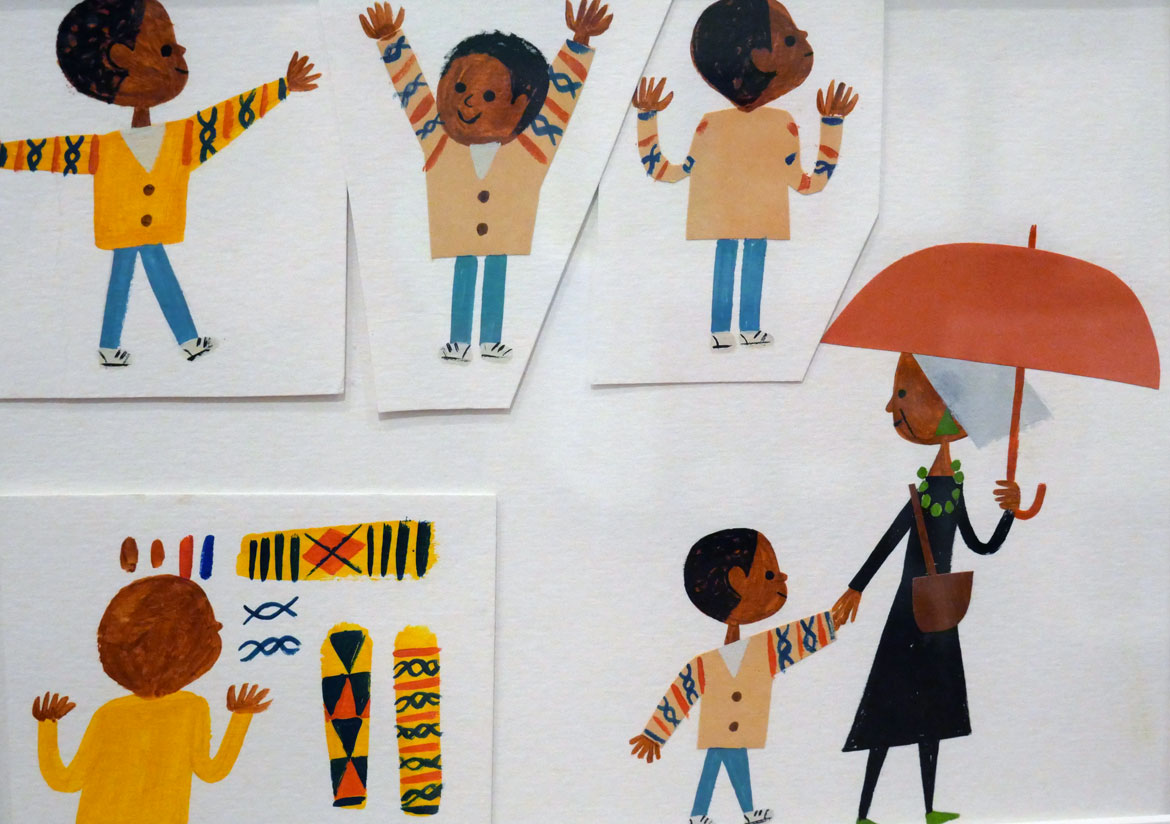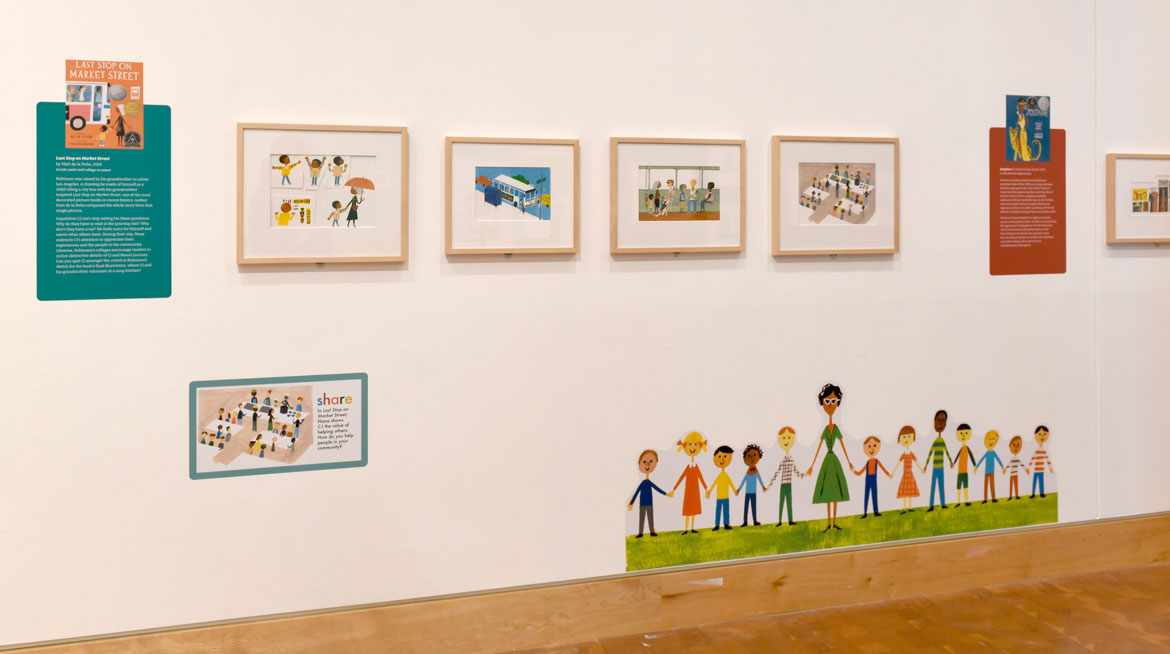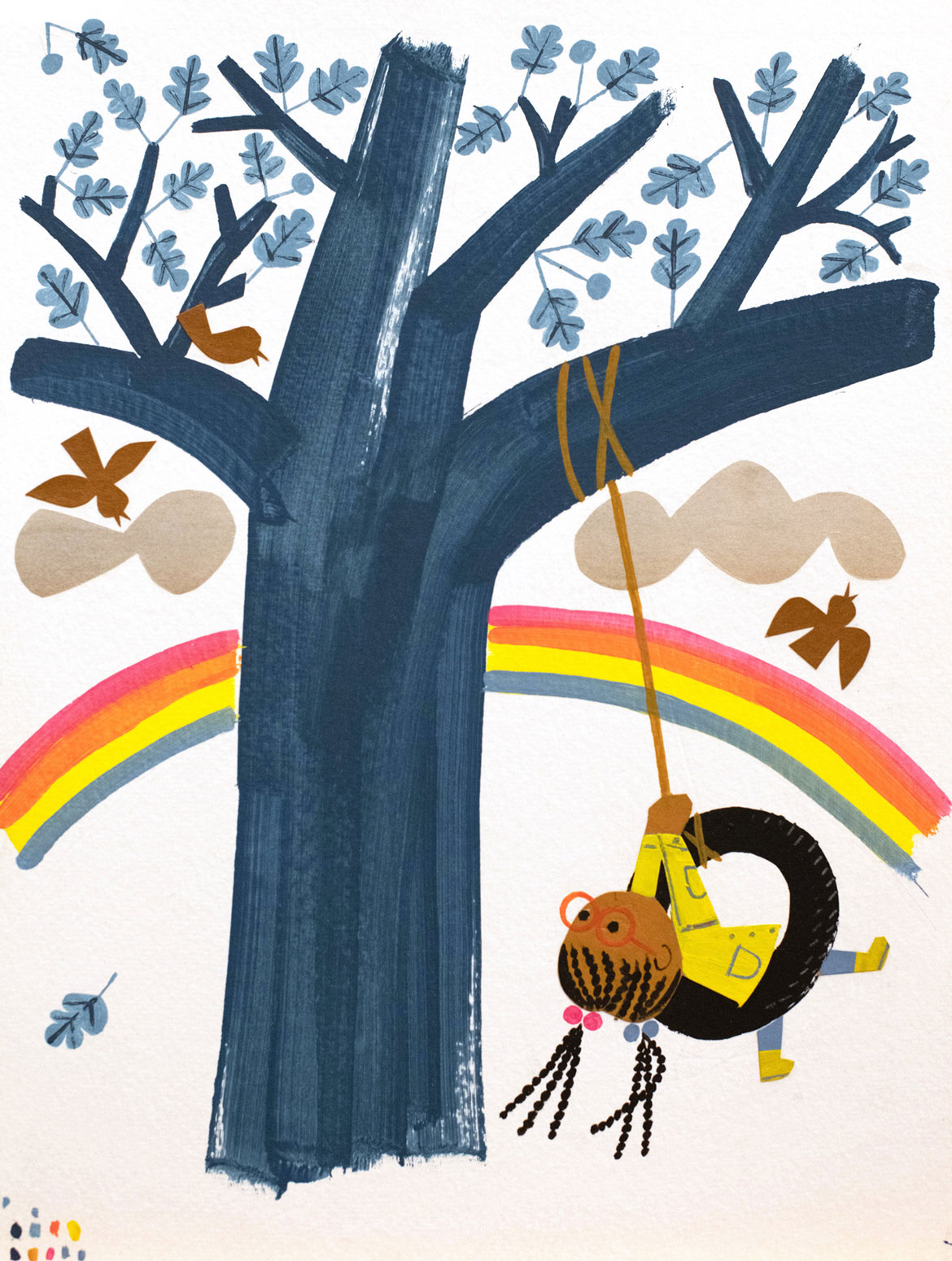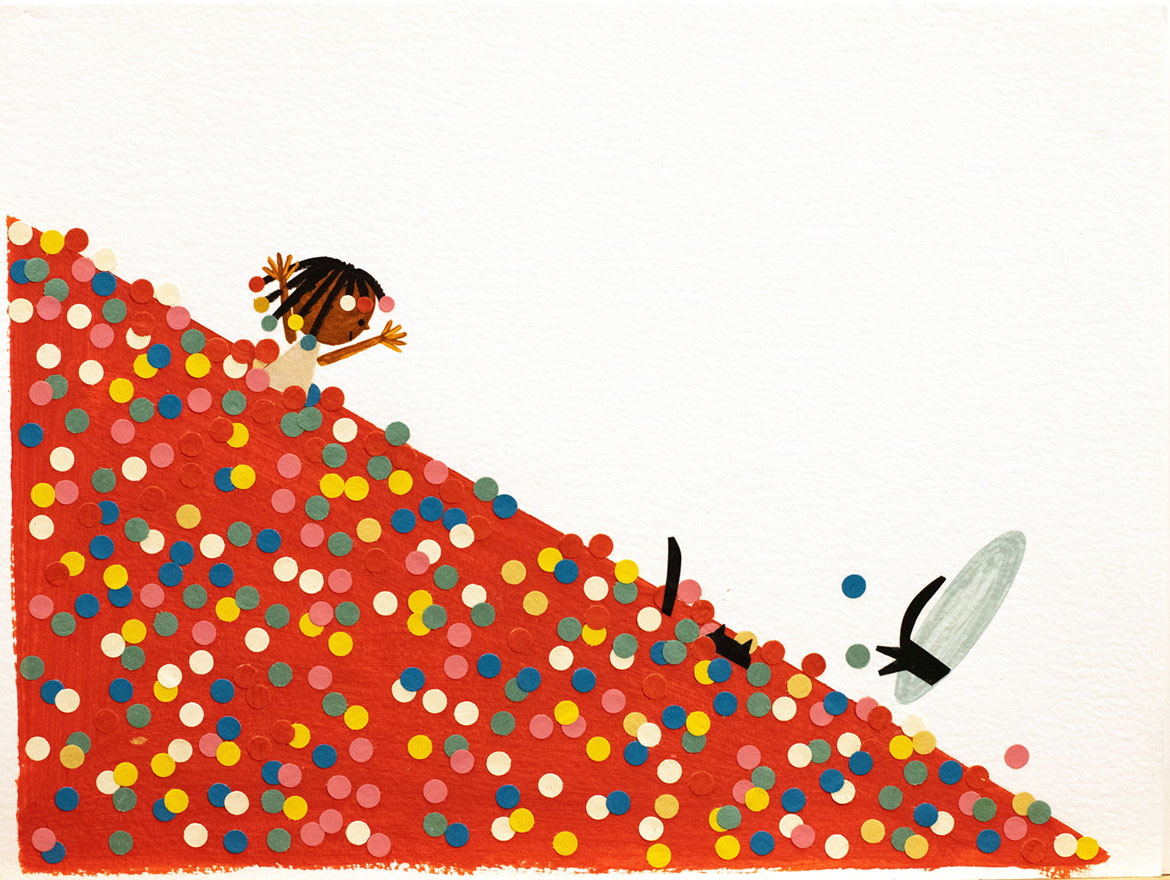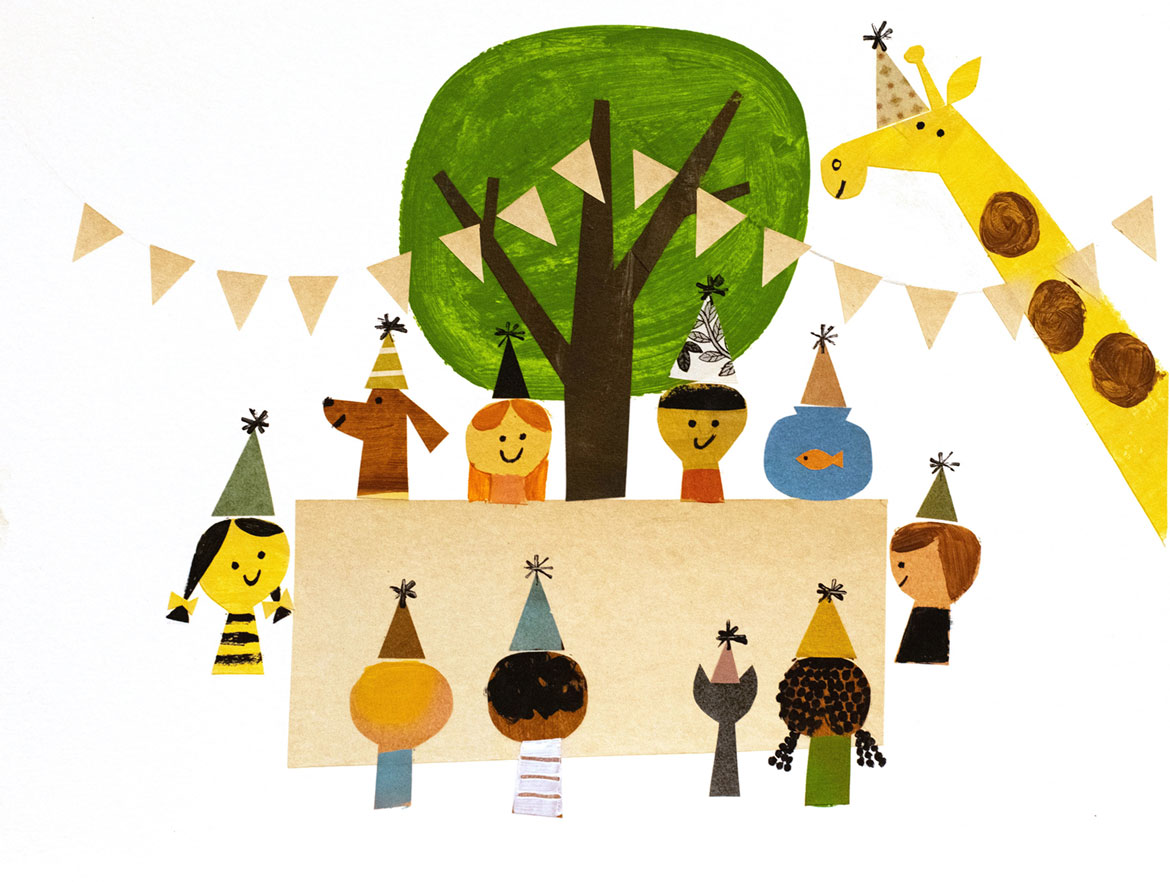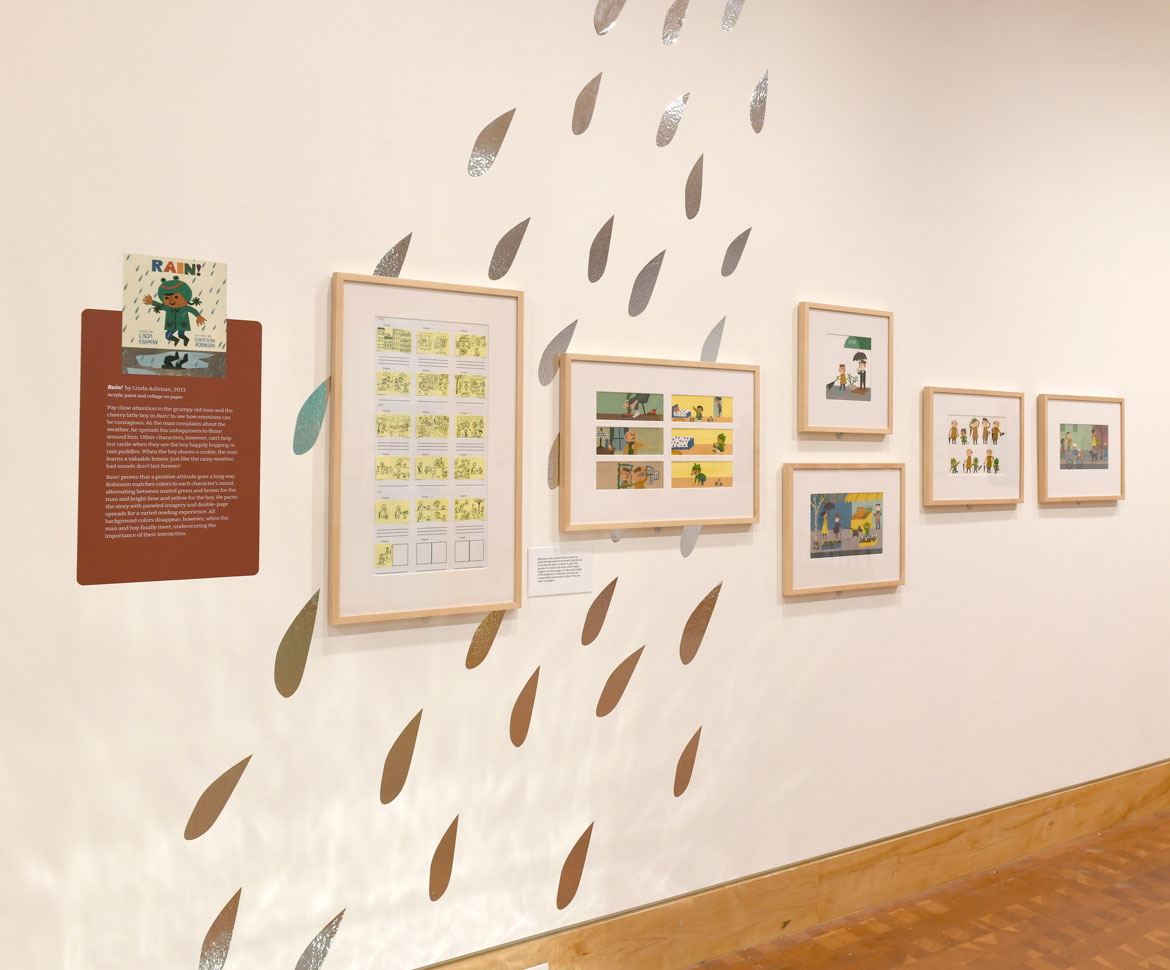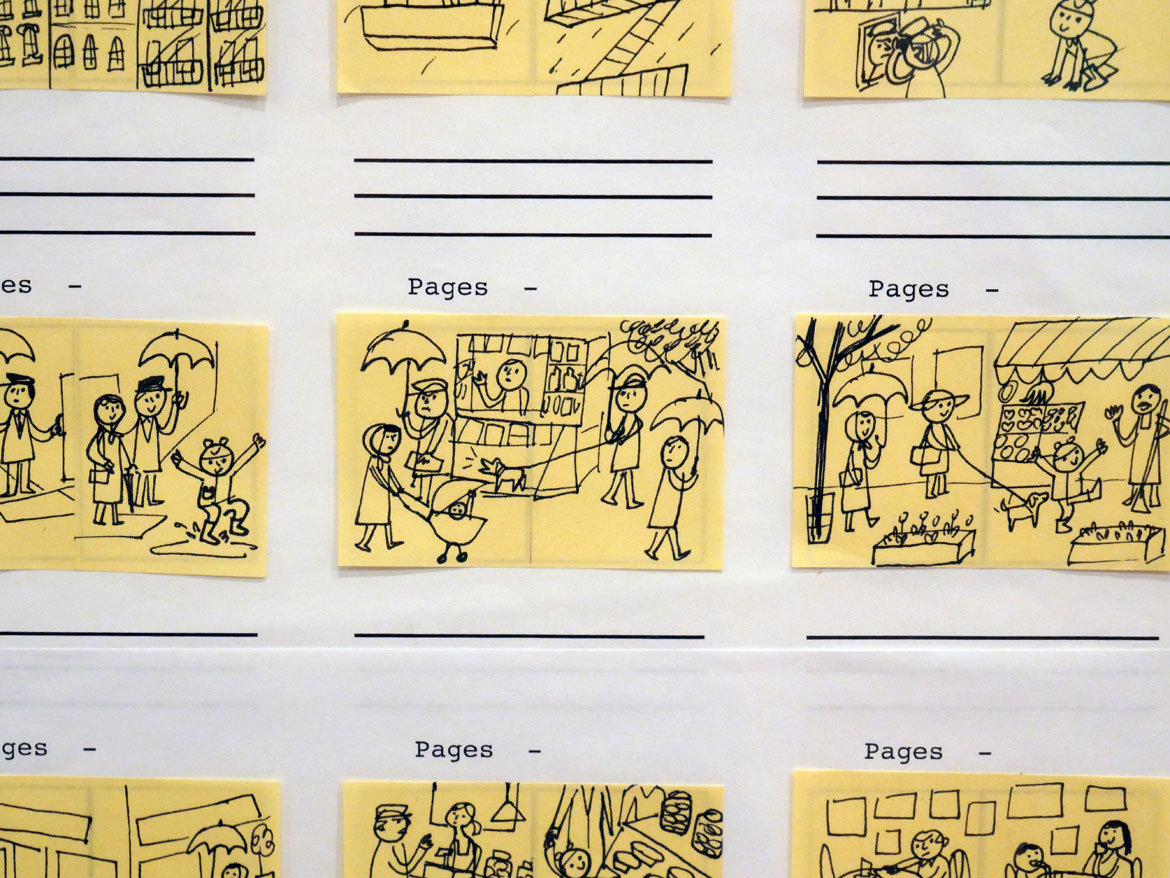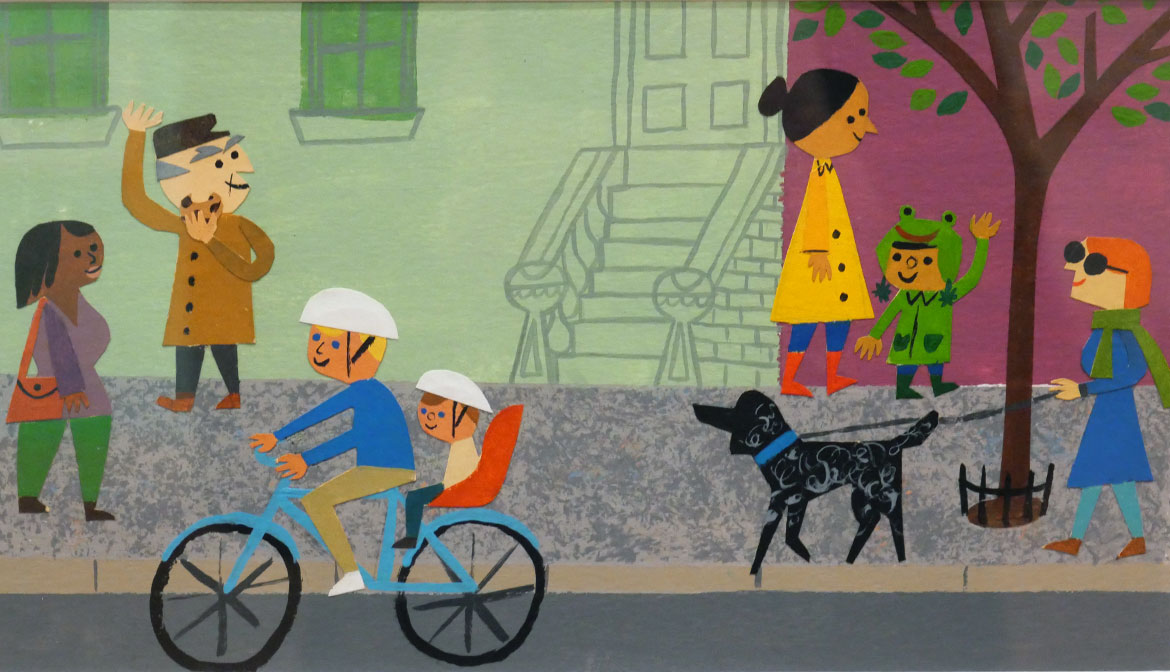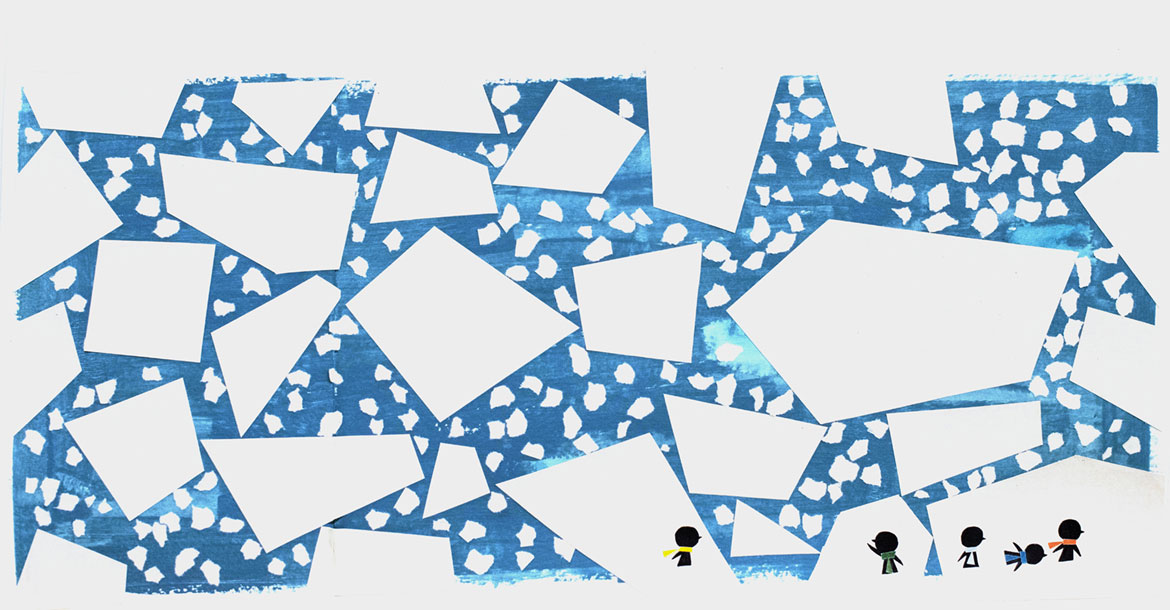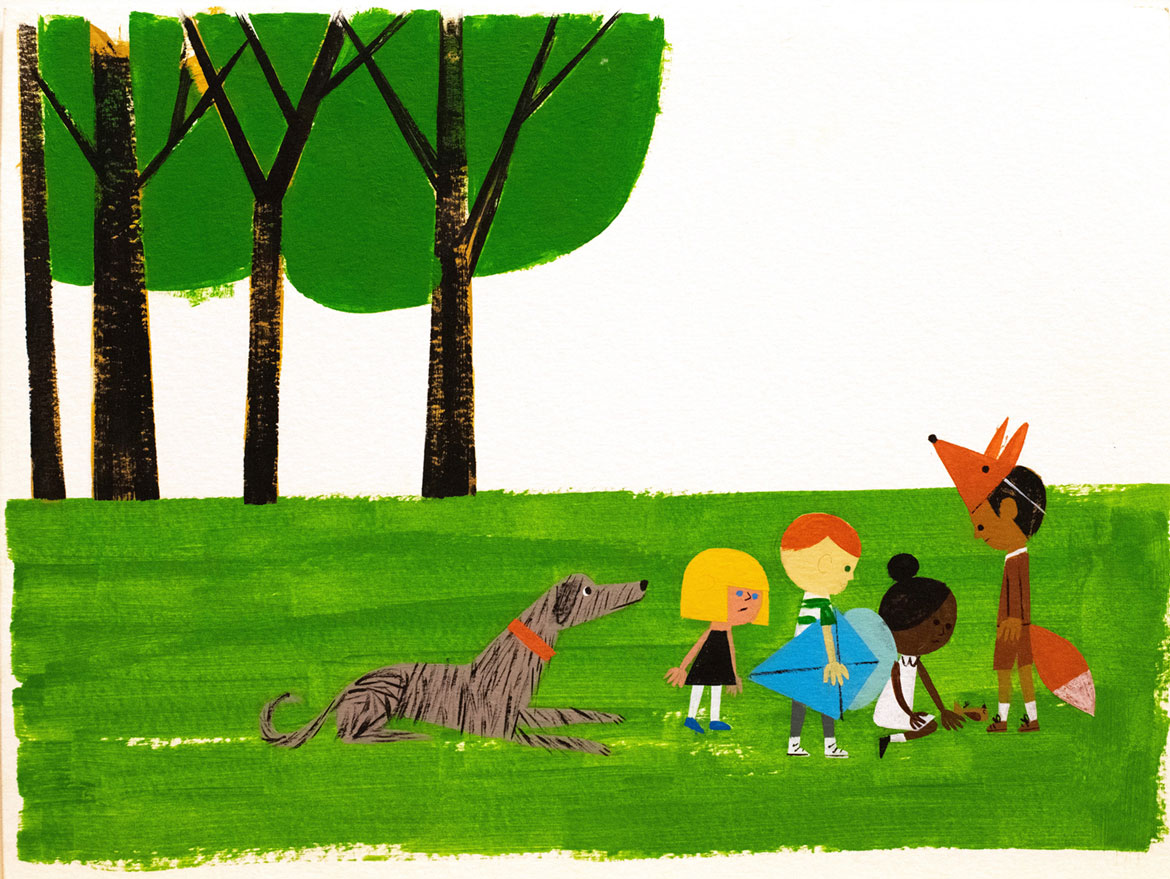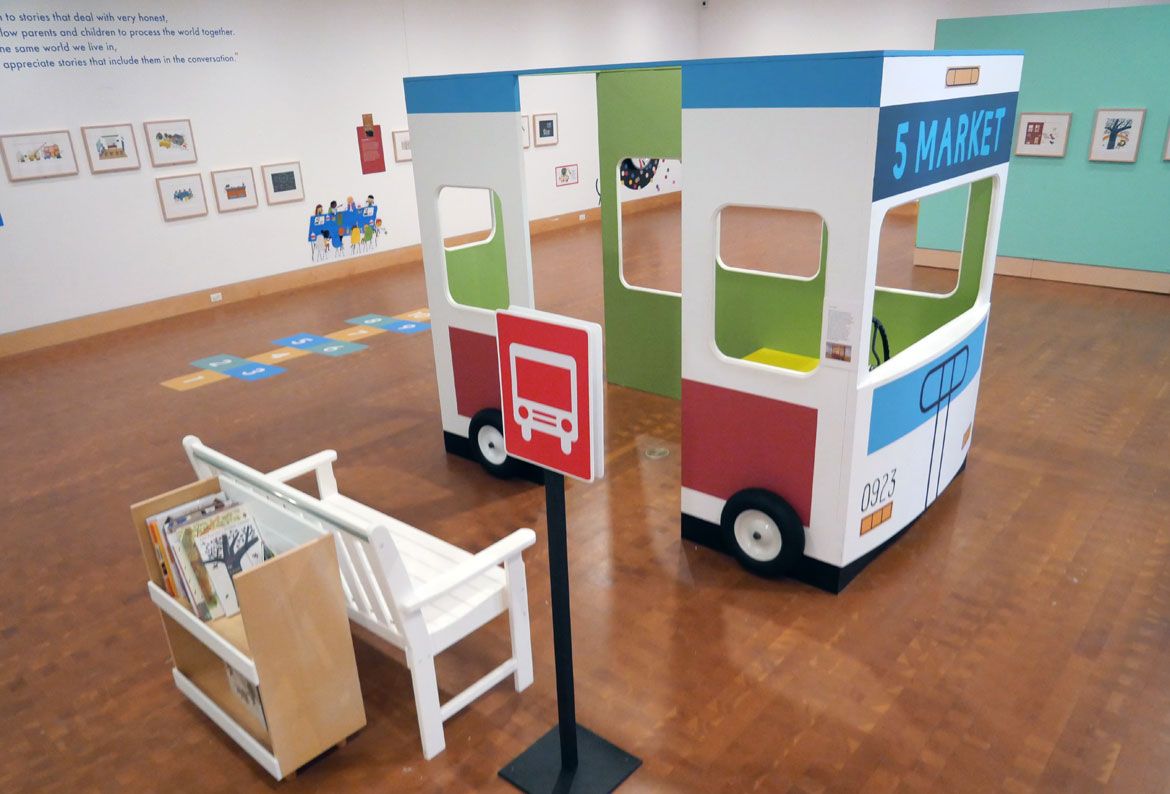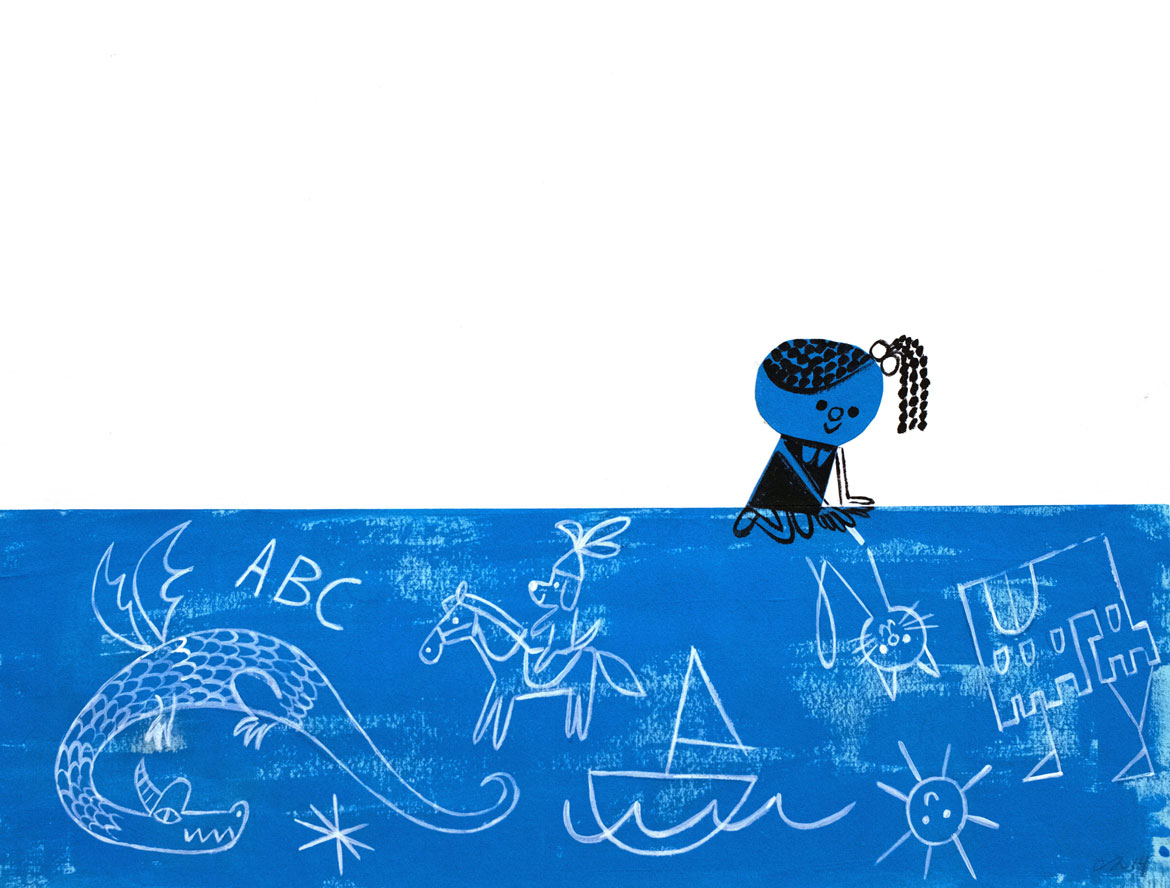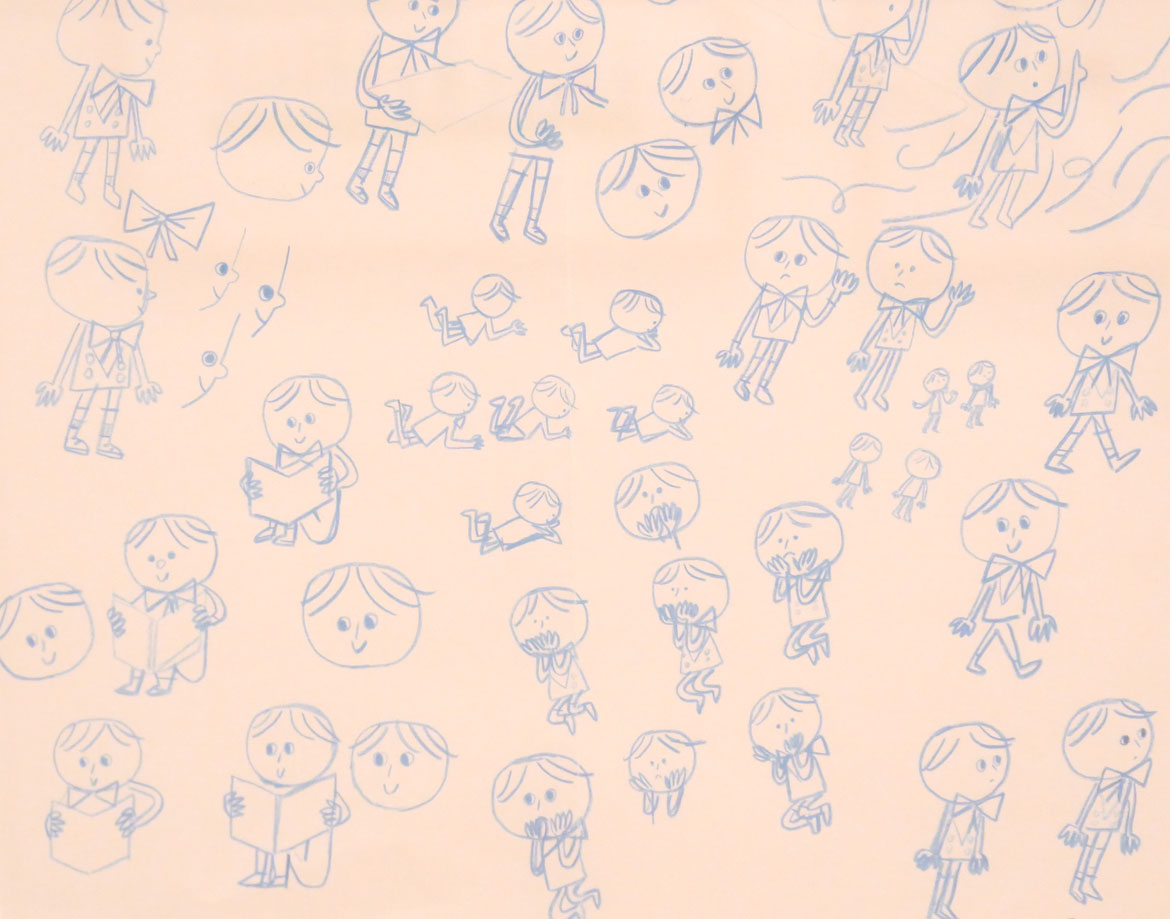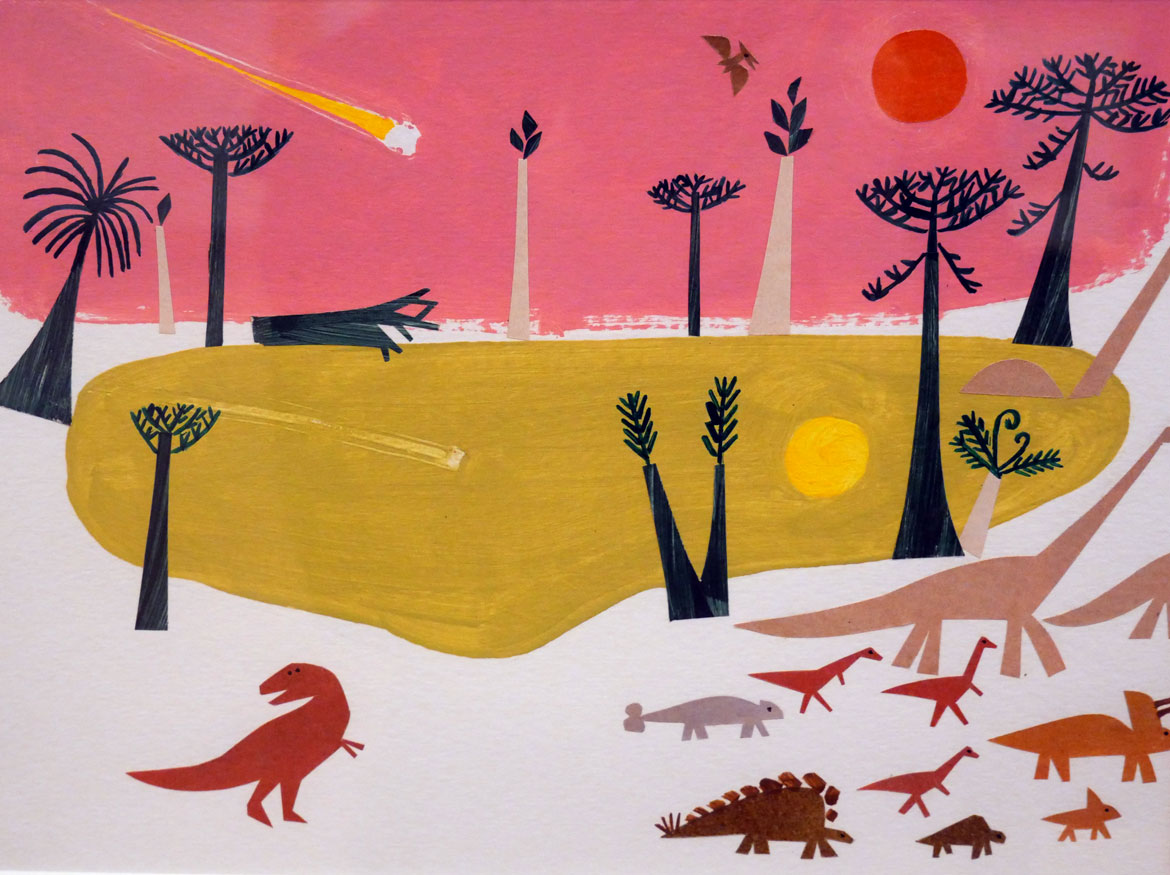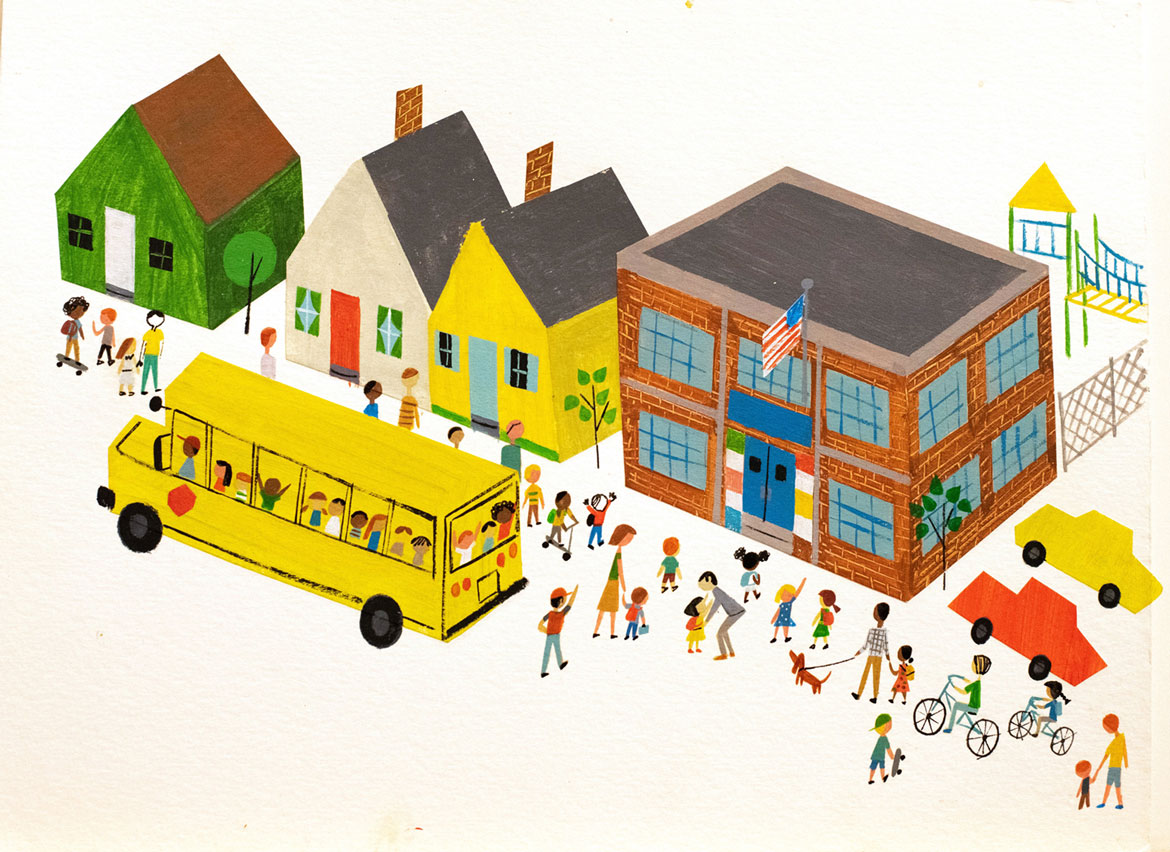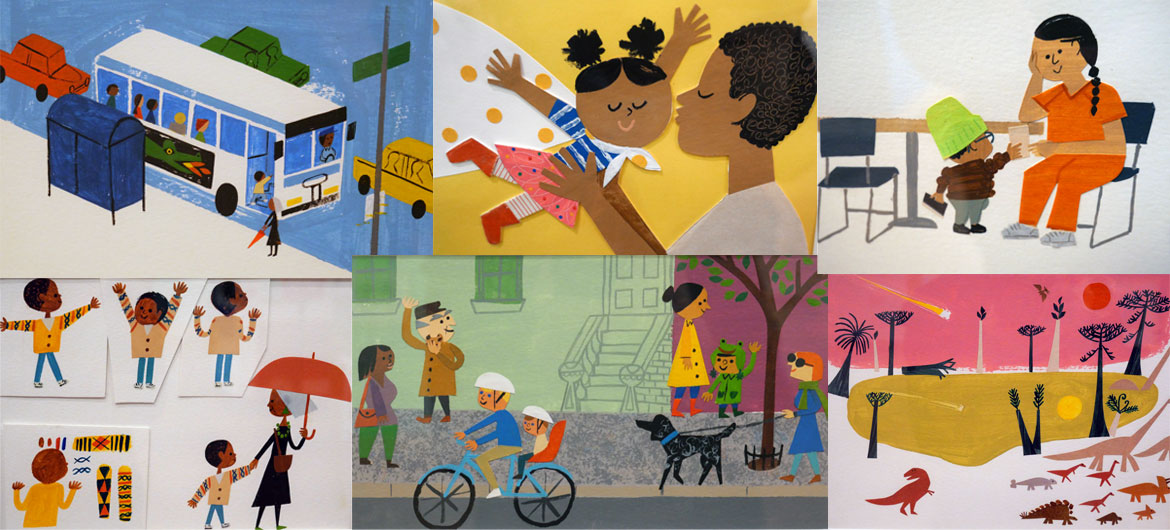“It’s important for me to tell stories that reflect the diverse world that we live in,” picture book illustrator and author Christian Robinson said in a 2016 video for PBS NewsHour. “Children need to see themselves in books, they need to see their gender, they need to see their color, hair texture, their disability, themselves. Picture books especially are many children’s first introduction to the world. Seeing yourself is almost like a message. It’s saying, ‘You matter, you are visible, and you’re valuable.’”
Robinson’s diverse subjects and his bright, disarming twist on midcentury modernist illustration by way of contemporary animation have made him one of the standout illustrators of this generation. His paintings, drawings and collages are suffused with kindness, youthful wonder, and Black joy. His books range from “Last Stop on Market Street,” written by Matt de la Peña, which won the Caldecott Honor, a Coretta Scott King Illustrator Honor, and the Newbery Medal, to illustrating Meghan Markle’s book “The Bench,” inspired by her husband, United Kingdom Prince Harry, and their son Archie. His latest book, “Twenty Questions,” written by Mac Barnett, has just been published.
Some 90 original artworks from 17 picture books that Robinson has illustrated are featured in the exhibition “What Might You Do?” at the Eric Carle Picture Book Museum in Amherst from Jan. 14 to June 4, 2023. The exhibition was organized by the National Center for Children’s Illustrated Literature in Abilene, Texas.
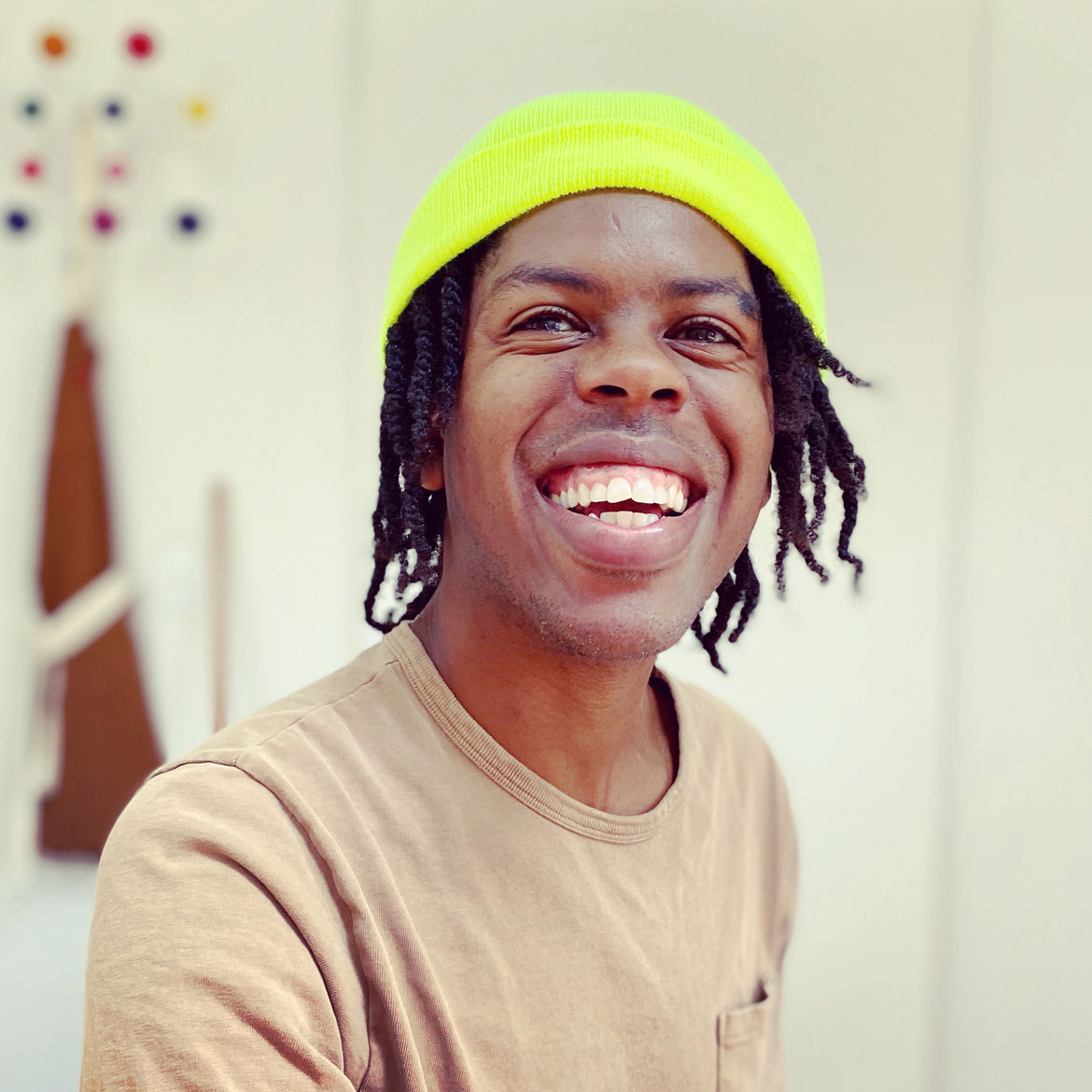
Robinson was born in 1986 in Hollywood, California, and was still just an infant when his father delivered him to the child’s nana, Lee Jenkins. “I’ve had Christian since he was five months,” she told the Today show in February 2021.
Growing up, his father was absent and “My mother was in prison for most of my childhood,” Robinson told Today. “She struggles with drug addiction and mental health.”
So Robinson and his brother grew up in his grandmother’s one-bedroom apartment in Los Angeles, which also was home to their aunt and two cousins. “I grew up in a predominantly Latino community in Los Angeles, and a lot of the backdrop of [his 2018 book] ’Carmela [Full Of Wishes]’ was inspired by the neighborhood I grew up in, from the laundromat to the panadería to the street vendors and vegetable stands,” Robinson told Publishers Weekly in 2018.

“Basically, the kids slept in the living room on a pull-out couch and a couple of pallets on the floor. It was a little space, but there was a lot of love,” Robinson told Curbed San Francisco in 2017. “There wasn’t space for placing my sculptures on the coffee table or putting up my drawings on the fridge. I kept most of my work under the couch, and it was thrown out a few weeks later. … My grandmother never said much about my art, but there was a quiet admiration there that was beyond words, and that encouraged me. When she had money, she would buy me a box of crayons.”
“Growing up, I didn’t see that many characters that looked like me,” Robinson told SFGate in 2020. “I think that sends a message as well, that your life doesn’t matter or isn’t as interesting. My favorite stories were sci-fi, fantasy, stories where kids discover they have some magic power — those are the stories I wanted to put children of color in.”
“As it worked out, it really fueled my creativity,” Robinson told Curbed San Francisco. “I would get lost in a world I could create. I spent my time drawing the mansions I wanted to live in and the pets that I didn’t have.”
“Making pictures was certainly my way of having some say over the world and what things could look like,” Robinson told San Francisco public radio station KQED in 2021. “It was a way to have some control over my circumstances. … You’re just feeling anxiety and nerves. You feel as a kid, even though it’s your parent who’s being punished, you feel punished. You know, when someone you love is serving time, you’re serving time along with them. I just remember a lot of pain, embarrassment, guilt and shame.”
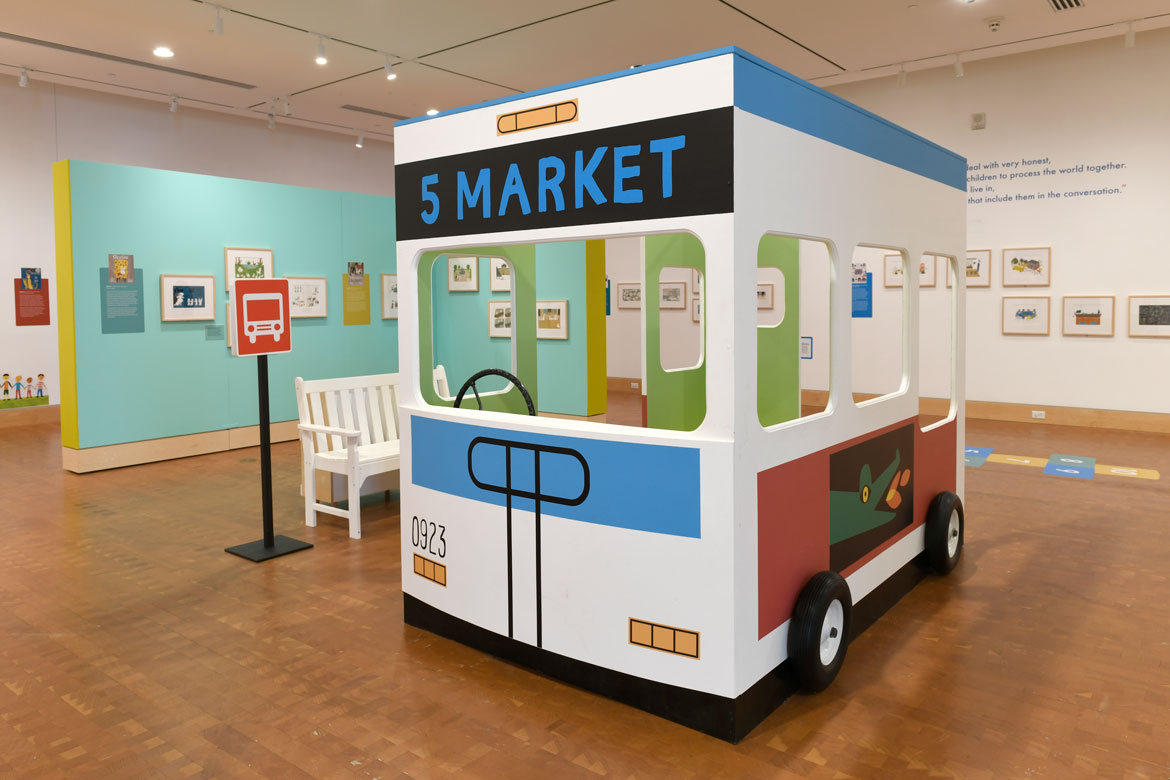
With encouragement from his high school teachers, Robinson studied animation at the California Institute of the Arts in Valencia, where he worked on a student film about a dinosaur. He helped animate some “Sesame Street” shorts. And he moved to San Francisco for an internship at Pixar in Emeryville during the summer of 2008. There he worked in the consumer products department, which produced toys, apparel and merchandise as Pixar was producing the animated feature film “Up.” “Most of my time there was spent exploring illustrative styles for children’s books,” he wrote on his blog that September. At a meeting with leaders, a director noticed his art and said, “Oh, he should do a book for us,” Robinson recalled in a 2016 talk at the San Francisco Public Library. “And that’s how I got my first book deal.”
His 2009 book “Beware of Dug,” adapted by Annie Auerbach, about the dog in “Up,” didn’t immediately lead to additional opportunities. So Robinson worked as a live-in nanny, did web merchandizing, taught kids how to make “Junk Art” out of recycled materials at an afterschool program, animated a music video for friend. In the meantime, he made up illustration assignments for himself, worked on samples, and posted the results at his Moss Covered Blog.
“I kind of wandered, but through great luck an agent of children’s books found my blog,” Robinson told Abilene Reporter News in Texas in 2020. New York agent Steven Malk emailed, saying he was a fan. “They asked me if I wanted to make books, and that’s how I got into picture books.”
Robinson illustrated 2012’s “Harlem’s Little Blackbird: The Story of Florence Mills” written by Rene Watson, a nonfiction picture book about the turn-of-the-20th-Century African American singer and dancer pushing against the bounds of segregation. Robinson’s books turned out to often be about characters who stand up to the meanness and narrow-mindedness of the mainstream, from 2014’s “The Smallest Girl in the Smallest Grade” to 2014’s “Gaston,” written by Kelly DiPucchio, about a bulldog in a family of poodles and a poodle in a family of bulldogs who meet and find love.

Robinson went on to illustrate a 2014 biography of the dancer Josephine Baker, written by Nancy Hruby Powell, and a 2021 biography of singer Nina Simone, written by Traci N. Todd. “I began working on sketches and illustrations for ‘Nina’ during the summer of 2020. Making pictures can often be an escape, where I can create some other kind of world that I want to see,” Robinson wrote on Instagram in September 2021. “Working on ‘Nina’ that summer didn’t allow for that. Escape wasn’t an option. What I was seeing in the world, the conversation around Black Lives Matter and the pandemic, all of that allowed me to see the thread between Nina’s fight for justice and our current struggle today. Her indomitable spirit and the way she channeled her pain into her art, helped me get through and was an inspiration as I made the pictures for this book.”
What’s surprising seeing Robinson’s illustrations in person at the Eric Carle Museum is how small his artworks are. Many illustrators work big and their original art is shrunk down for reproduction, which can help the drawing feel sharper, more precise. The scale of Robinson’s work suggests it gets enlarged slightly in reproduction, which likely adds to the loose painterly feeling of his art.
Robinson’s illustrations often begin when he receives the picture book manuscript. “This is the place where I just use my imagination. I just figure out this world. I figure out what the characters will look like. I figure out what the setting will look like,” Robinson said in his 2016 talk at the San Francisco Public Library. “Typically it involves a lot of research and reference.”
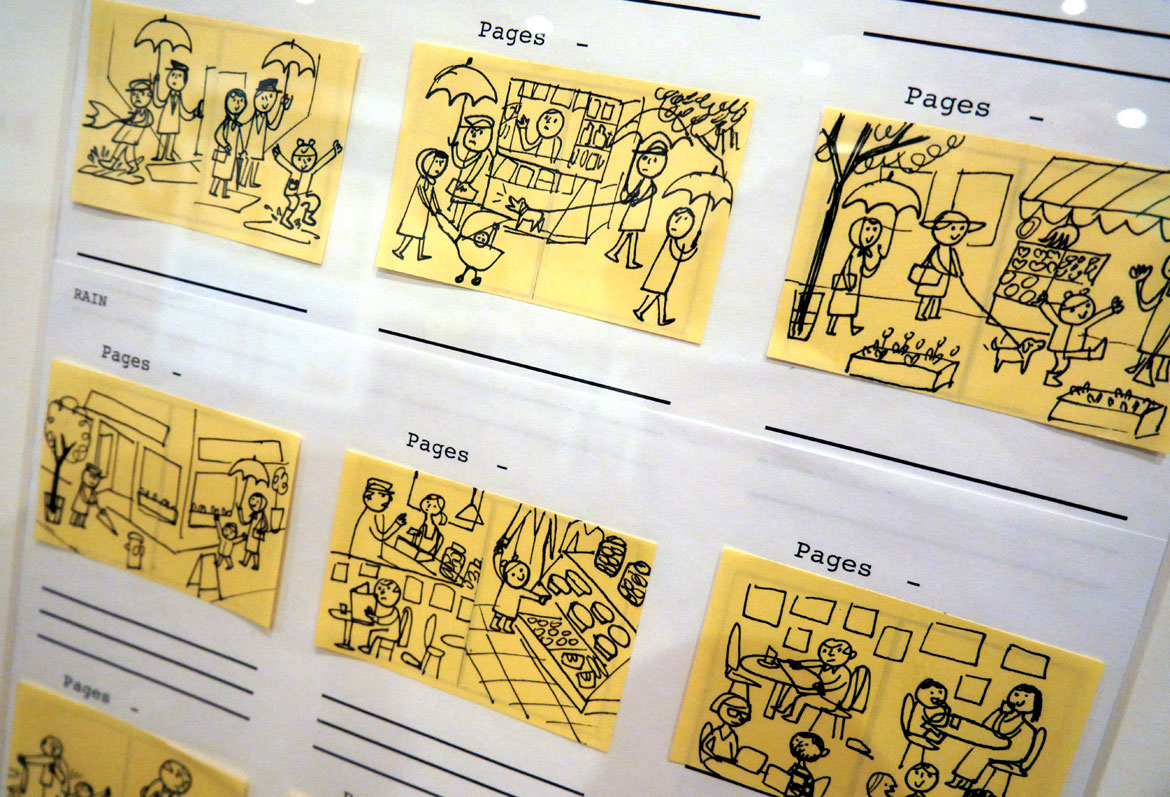
Then he sketches out the whole book in “storyboards” on Post-it Notes. The final illustrations mix paintings, collage and details added in colored pencil. Sometimes he works in watercolor too. He favors simple shapes that can evoke a child’s drawings rendered with a modernist flair. “Typically when I illustrate, I’m all about simplicity, so I’m always simplifying things,” he told NPR in 2021.
Robinson’s agent introduced him to writer Matt de la Pena. Their first collaboration became the award-winning 2015 book “Last Stop on Market Street,” about a boy and his nana attending church, then riding a bus to volunteer in a soup kitchen. It was partly inspired by painting Robinson had made for a benefit auction of him and his nana riding a bus. He had posted it to his blog, writing, “Nana ( my grandma ) didn’t drive, I remember spending a lot of time on the bus growing up. I don’t find comfort in riding a bus, but in this case being with my grandmother who was and has always been there for me.”
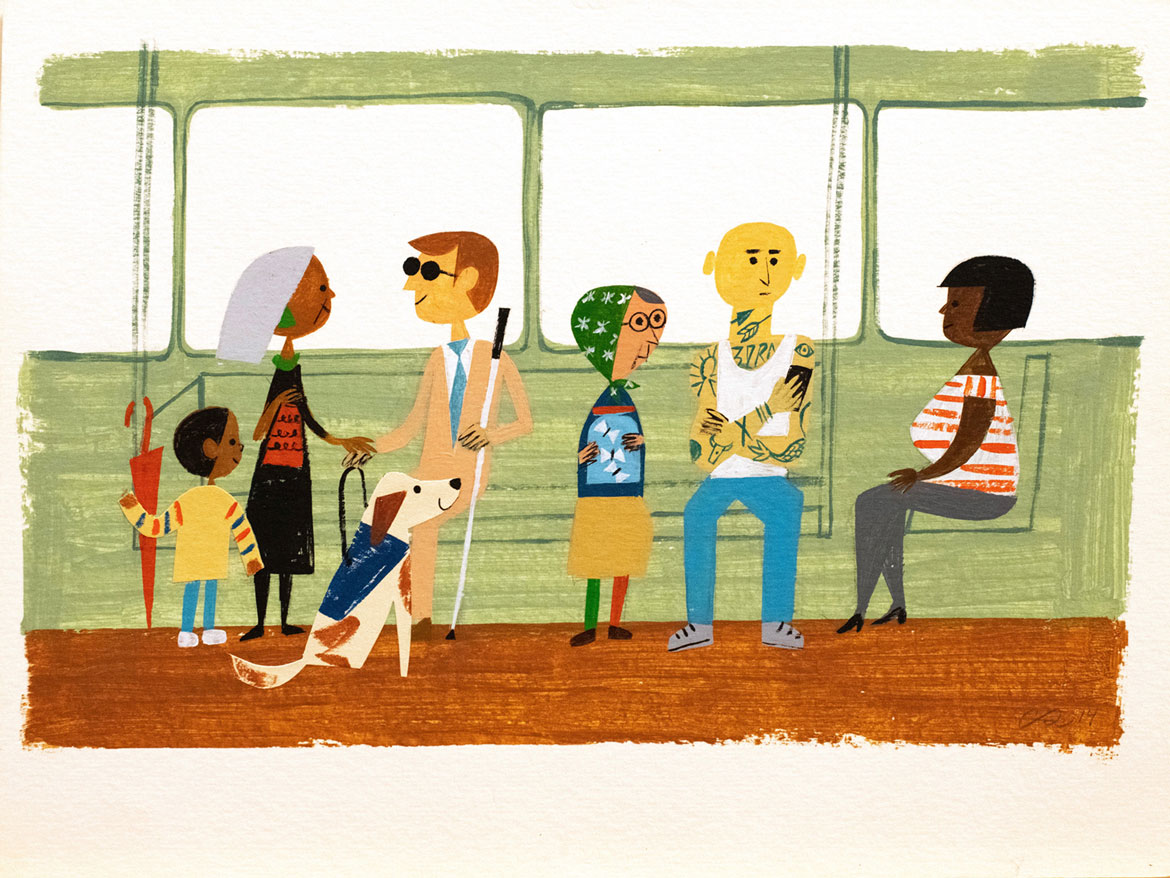
Robinson and De la Pena’s 2018 book “Carmela Full of Wishes” is about a young girl in a vibrant Spanish-speaking neighborhood wishing for candy, for her hotel housekeeper mother to have a life of luxury, for her deported father “getting his papers fixed so he could finally be home.” Robinson told Publishers Weekly in 2018. “I can’t relate specifically to having a father deported, like Carmela, but my mother was in and out of prison for most of my childhood. There was something healing about illustrating a book that touches on a subject not often seen in picture books, but an experience that affects so many children.”
Robinson and De la Pena’s 2021 collaboration “Milo Imagines the World” is about a boy and his sister riding the subway to visit their mother in prison—and the stories he draws in his sketchbook along the way of other riders and the oppressions and joys they find, and finally Milo imagining sitting on a stoop eating ice cream with his sister and their freed mother.
“Many of the books that me and Matt have worked on, we’re dealing with, you know, real world situations,” Robinson told KQED in 2021. “I guess Matt is like giving us a taste of the real world. And all I’m doing is just reminding … that, yeah, there’s challenges, there’s greediness, but there’s also beauty. And there’s joy in all these experiences. And I think that’s what we’re trying to do, is just honor the lives of everyday people, working class people.”
“On any project I work on, the most, like, essential element is fun,” Robinson told NPR in 2015. “I really have to enjoy what I’m doing. I really have to sort of give it a spirit of play and enjoyment. And I feel oftentimes books that focus on diversity, there tends to be an element of heaviness, maybe because the history is heavy and serious. But I feel like a part of evolution of telling diverse stories that can reach wider audiences is making sure it’s, like, told in a way that is playful and fun.”
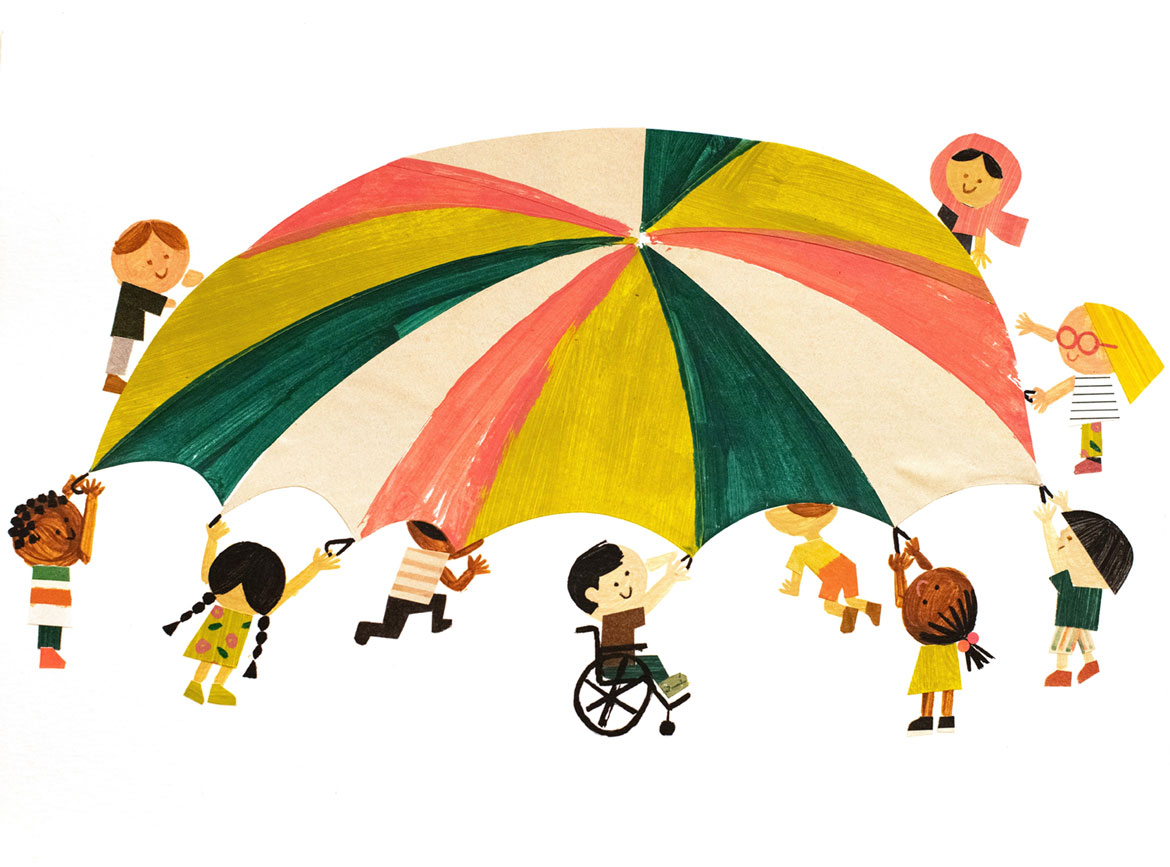
Feeling priced out of the Bay Area, where Robinson shared a four-bedroom apartment and had a nearby studio, he relocated to Sacramento, California, by 2019, before moving to Oakland in 2021.
“Over the summer, my brother and I were overwhelmed with concern for our mother who we hadn’t seen in over two years. Last we’d heard, she was living unhoused on Skid Row in LA,” Robinson posted on Instagram in December 2021. “So we went looking for her, and after hanging posters and speaking with folks, we found her in a few hours. I know I’m not alone in loving someone who struggles with addiction and mental health. It’s beginning to occur to me that a lot of what drives me might be connected to the powerlessness I feel towards helping my mother. I can’t help but wonder how things would be different for my mother today if as a child she saw more images that made her feel seen and read enough stories that made her feel understood.”
Robinson affirms in his 2020 book “You Matter”: “Sometimes you feel lost and alone. But you matter.” It feels like it could be a message to his mother. It feels like a message back through time to his young self. It feels like the message he wants the Carmelas and Milos, all the children growing up in difficult situations, to hear—and find hope.
If this is the kind of coverage of arts, cultures and activisms you appreciate, please support Wonderland by contributing to Wonderland on Patreon. And sign up for our free, occasional newsletter so that you don’t miss any of our reporting. (All content ©Greg Cook 2023 or the respective creators.)

